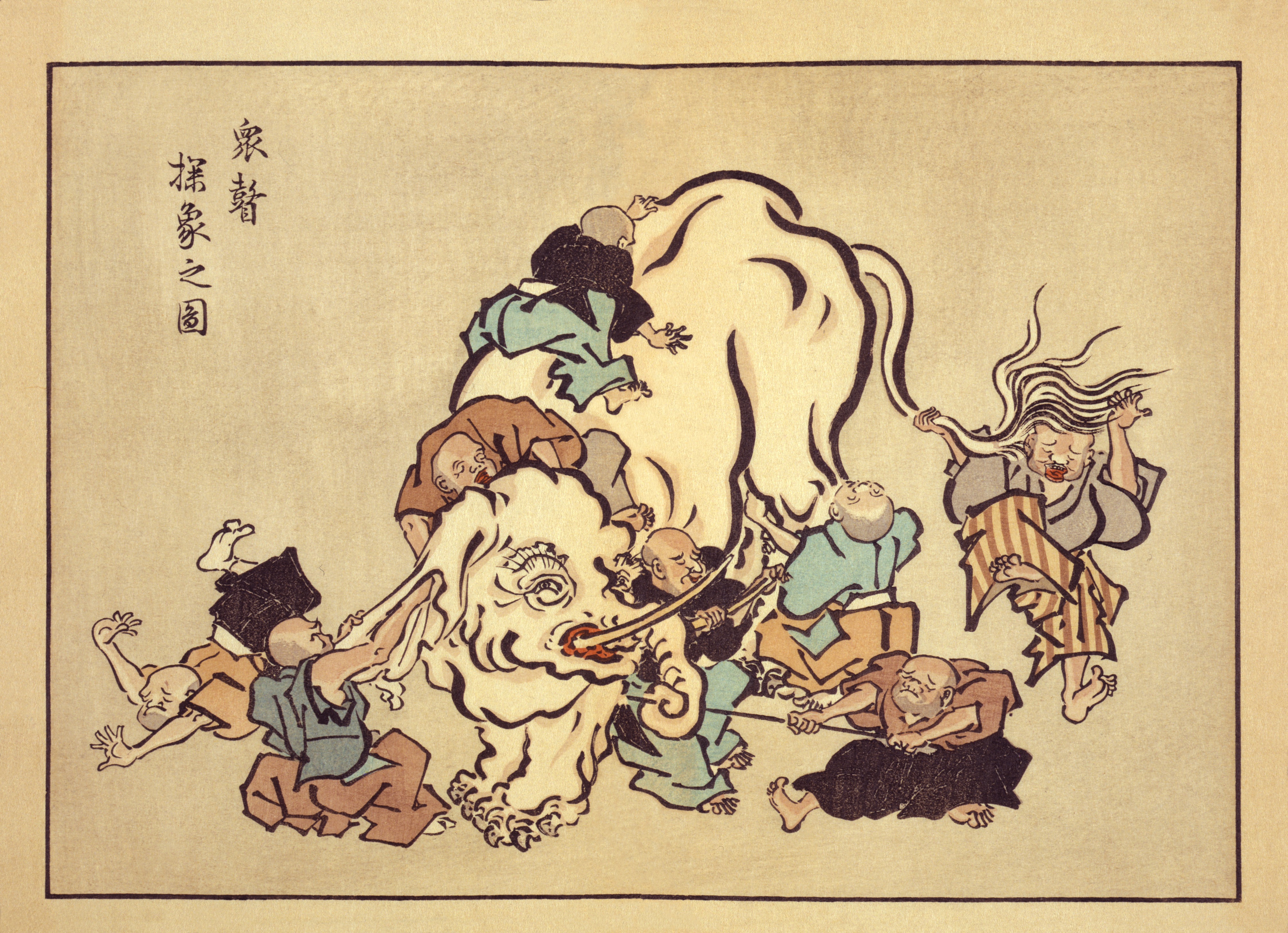Tittha Sutta on:
[Wikipedia]
[Google]
[Amazon]
 Tittha Sutta, is a Buddhist scripture in Udāna, the third book in the fifth collection of Sutta Pitaka, known as Khuddaka Nikāya Udana is one of the oldest texts in the
Tittha Sutta, is a Buddhist scripture in Udāna, the third book in the fifth collection of Sutta Pitaka, known as Khuddaka Nikāya Udana is one of the oldest texts in the
Udâna in English translation from Pali by Dawsonne Melanchthon Strong
* ttp://www.khamush.com/tales_from_masnavi.htm#The_Elephant Jalal ad-Din Muhammad Rumi's version translated by A.J. Arberry
Jain version at Jainworld
{{Buddhism topics Khuddaka Nikaya Channelled texts
 Tittha Sutta, is a Buddhist scripture in Udāna, the third book in the fifth collection of Sutta Pitaka, known as Khuddaka Nikāya Udana is one of the oldest texts in the
Tittha Sutta, is a Buddhist scripture in Udāna, the third book in the fifth collection of Sutta Pitaka, known as Khuddaka Nikāya Udana is one of the oldest texts in the Pali Canon
The Pāli Canon is the standard collection of scriptures in the Theravada Buddhist tradition, as preserved in the Pāli language. It is the most complete extant early Buddhist canon. It derives mainly from the Tamrashatiya school.
During t ...
of Theravāda Buddhism
''Theravāda'' () ( si, ථේරවාදය, my, ထေရဝါဒ, th, เถรวาท, km, ថេរវាទ, lo, ເຖຣະວາດ, pi, , ) is the most commonly accepted name of Buddhism's oldest existing school. The school' ...
. Tittha Sutta contains a famous parable that has spread widely in the world, also to other cultures and views, the parable of the blind men and the elephant.
Division and structure
'' Udāna '' consists of eight chapters ('' cradle '') with ten conversations or sutras each, ie. 80 calls. Each sutra consists of a long story or parable and a short concluding udāna, or exclamation, from the Buddha. about "The chapter on being blind from birth". The sutras have the following order: I. '' Āyusama-osajjana Sutta '' II. '' Paṭisalla Sutta '' III. "Ahu Sutta" IV. "'Tittha Sutta' ' V. '' Tittha Sutta '' WE. "'Tittha Sutta' ' VII. '' Subhūti Sutta '' VIII. '' Gaṇika Sutta '' IX. '' Adhipataka Sutta / Upāti Sutta '' X. '' Uppajjanti Sutta '' Tittha Suttha comprises three of these sutras, where the parable of the monks and the elephant is found in the first, viz. sutra number 4. The parable is usually referred to as "The story of the blind men and the elephant".The parable of the Buddha
The scripture is about some monks (Bhikkhu
A ''bhikkhu'' (Pali: भिक्खु, Sanskrit: भिक्षु, ''bhikṣu'') is an ordained male in Buddhist monasticism. Male and female monastics ("nun", ''bhikkhunī'', Sanskrit ''bhikṣuṇī'') are members of the Sangha (Buddhist ...
) who hear some ascetic Hindus in lively argumentation about whether the world is eternal or not, infinite or not, whether the soul is separate from the body or not. They then consulted the Lord Buddha
Siddhartha Gautama, most commonly referred to as the Buddha, was a wandering ascetic and religious teacher who lived in South Asia during the 6th or 5th century BCE and founded Buddhism.
According to Buddhist tradition, he was born in L ...
who taught them the parable of the blind men and the elephant: A king has taken an elephant to his palace and asks the city's blind men to examine it. When the men felt each part of the elephant, the king asked them, each one, to describe what an elephant is. One man has felt the elephant's head and describes it as a pot, another has felt it on the ear and describes it as a basket or a sieve. Someone has felt the pastures and describes a plow beetle and someone has felt the legs and talks about tree trunks. They have all experienced the elephant in different ways and can not agree on what an elephant is. Their conclusions are completely different and they end up in a heated dispute. The moral of the matter is that it is a waste of time and energy to determine what it is you are experiencing, as this will necessarily be different.
Canki Sutta
The Buddha used the parable of the blind men in error twice. The parable in Tittha Sutta is the older of the two famous texts. The Buddha also used the parable in ''Canki Sutta
Canki (german: Waldhof) is a village in the administrative district of Gmina Ryn, within Giżycko County, Warmian-Masurian Voivodeship, in northern Poland. It lies approximately north-east of Ryn, south-west of Giżycko, and east of the regio ...
'', which is part of '' Majjhima Nikāya '' which is the second ''Nikāya
''Nikāya'' () is a Pāli word meaning "volume". It is often used like the Sanskrit word '' āgama'' () to mean "collection", "assemblage", "class" or "group" in both Pāḷi and Sanskrit. It is most commonly used in reference to the Pali Buddhist ...
'', or the collection in Sutta-Pitaka . Canki Sutta is included in the middle part of nikayan, '' Majjhimapaṇṇāsapāḷi '', in the chapter '' Brāhmaṇa Vagga '', where it is sutta number 95.
Modern use of the parable
The parable has spread widely in the world, also to other cultures and views. It is therefore not always known when it is told what its origin is - in Buddhism, Hinduism and Jainism. It is therefore occasionally attributed to both Christian sources and the American poet John Godfrey Saxe.See also
* ''Early Buddhist Texts
Early Buddhist texts (EBTs), early Buddhist literature or early Buddhist discourses are parallel texts shared by the early Buddhist schools. The most widely studied EBT material are the first four Pali Nikayas, as well as the corresponding Chines ...
''
* '' Khuddaka Nikaya ''
* '' Udāna''
Notes
External links
Udâna in English translation from Pali by Dawsonne Melanchthon Strong
* ttp://www.khamush.com/tales_from_masnavi.htm#The_Elephant Jalal ad-Din Muhammad Rumi's version translated by A.J. Arberry
Jain version at Jainworld
{{Buddhism topics Khuddaka Nikaya Channelled texts